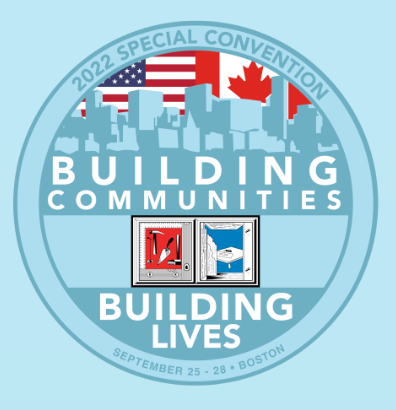Staying Safe in the Heat
Workers in the construction industry, especially BAC members, must often work outdoors in direct sunlight, or hot areas with poor ventilation, raising their risk for heat-related illnesses or death.
To stay safe in these conditions, workers need to know what to look for. There are several different medical conditions one can suffer when exposed to high temperatures for extended periods, including heat exhaustion, heat stroke, and more.
KNOW THE SIGNS
If a worker is suffering from heat exhaustion, they may exhibit signs of nausea, weakness, heavy sweating, and dizziness. If a worker is suffering from heat stroke, they may appear confused with slurred speech and eventual loss of consciousness. Heat stroke is fatal if treatment is delayed, so it is crucial for workers exposed to these conditions to know what symptoms to look for and how to limit exposure to extreme temperatures. For a complete list of heat-related conditions and their symptoms, visit the National Institute for Occupational Safety and Health at tinyurl.com/3s9hpuyk.
There are several factors that may raise the chances of a worker experiencing heat-related illness or death, including being new to the job site, not drinking enough water, or doing heavy physical labor in hot or humid conditions.
In order to prevent experiencing severe heat illness while working in hot conditions, workers should not wait until thirsty to drink water, especially when working in dry heat where they may not notice sweat. During extreme heat conditions, it is important to regularly replenish fluids lost through sweating, avoid caffeine, and take frequent breaks out of the sun. In areas with dry heat conditions, workers may not notice sweating.
MAKE A PLAN
Construction workers account for 7% of the US workforce but experience 38% of heat-related deaths at work. These deaths are highly preventable through proper planning, training, and monitoring. To keep workers safe, employers should have a written plan in place to prevent prolonged exposure to extreme temperatures and hot weather conditions. Such plans must include measures to help new workers develop tolerance to heat through acclimatization, specify who will provide oversight on a daily basis, criteria to determine if the total heat stress is hazardous, and more.
Resources for BAC signatory contractors looking to develop their own plans can be found at bacweb.org/safety, including the CPWR checklist for Heat-Illness Prevention (https://tinyurl.com/4bbtzfz4). Employers should:
+ Have a heat-illness prevention and emergency plan in place.
+ Provide regular training on heat hazards and steps to prevent illness.
+ Keep clean, cool water on hand for workers — about 4 cups (two 16-ounce bottles) each hour.
+ Schedule frequent breaks in shady or cool areas.
+ Gradually increase workload for new workers so they can adjust to the heat.
For more information about how to avoid heat-related illness, visit the Center for Construction Research and Training at https://tinyurl.com/ yc22ba34. If you are concerned your employer is not taking the appropriate steps to avoid heat-related illness, contact your steward or local business representative.
BAC WORKING TO MEET THE CHALLENGE OF INCREASING EXTREME HEAT
Knowing this issue will continue to grow in severity as our climate changes, the delegates at the 2022 Special Constitutional Convention passed resolutions focused on keeping workers protected from the heat through better legislation and better enforcement of collective bargaining agreements. The two resolutions, No. 53 and 54, focus on protecting workers through a two-pronged approach.
 Resolution No. 53 calls on the Governments of the United States and Canada to pass the Asunción Valdivia Heat Illness and Fatality Prevention Act. This Act would require employers to implement measures to mitigate risk to workers from heat stress and would establish national requirements for employers to take steps to minimize risks associated with heat. Resolution No. 54 calls on BAC Local Unions and ADCs to enforce provisions in their collective bargaining agreements that ensure rest breaks from the heat, accessible drinking water, and reinforce the role of stewards in work site monitoring.
Resolution No. 53 calls on the Governments of the United States and Canada to pass the Asunción Valdivia Heat Illness and Fatality Prevention Act. This Act would require employers to implement measures to mitigate risk to workers from heat stress and would establish national requirements for employers to take steps to minimize risks associated with heat. Resolution No. 54 calls on BAC Local Unions and ADCs to enforce provisions in their collective bargaining agreements that ensure rest breaks from the heat, accessible drinking water, and reinforce the role of stewards in work site monitoring.
More recently, the Biden administration and the Department of Labor have unveiled a new federal regulation on extreme heat. The proposed rule includes requirements for identifying heat hazards, developing heat illness response plans, training for employees and supervisors, as well as implementing new safety standards including rest breaks, access to shade and water, and heat acclimatization periods for new employees. More information about the proposed ruling can be found at https://tinyurl.com/4myxptpr.
To find out more about these resolutions and the Asunción Valdivia Heat Illness and Fatality Prevention Act, go to bacweb.org.
